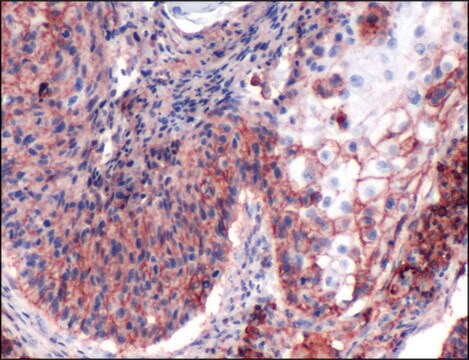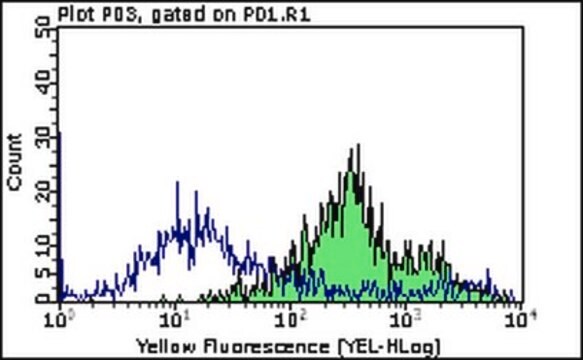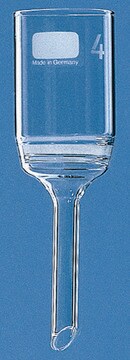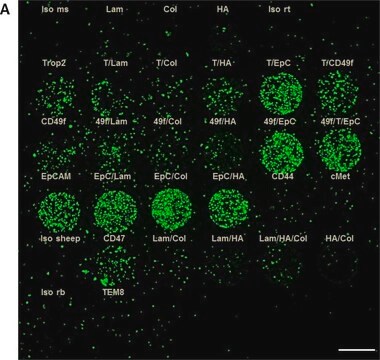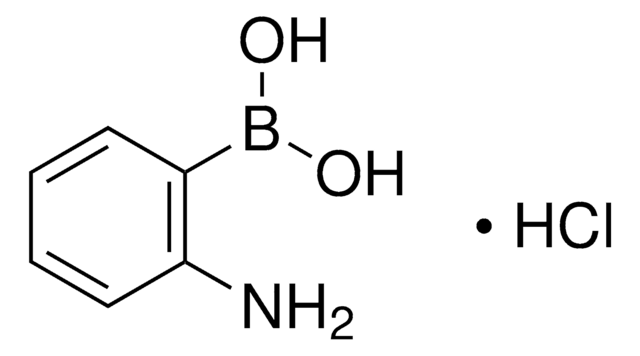C7923
Monoclonal Anti-CD44 antibody produced in mouse
clone A3D8, purified immunoglobulin, buffered aqueous solution
同義詞:
Anti-CDW44, Anti-CSPG8, Anti-ECMR-III, Anti-HCELL, Anti-HUTCH-I, Anti-IN, Anti-LHR, Anti-MC56, Anti-MDU2, Anti-MDU3, Anti-MIC4, Anti-Pgp1
登入查看組織和合約定價
全部照片(1)
About This Item
共軛:
unconjugated
application:
FACS
無性繁殖:
A3D8, monoclonal
物種活性:
human
citations:
16
技術:
flow cytometry: 5 μL using 1 × 106 cells
推薦產品
一般說明
CD44 is a glycosylated cartilage-linked protein. The protein exists in a variety of forms with different molecular structures, ranging from 85 kDa to 250 kDa. It is a multistructural and multifunctional cell surface molecule and involved in various biological processes such as cell proliferation, cell differentiation, cell migration, angiogenesis, presentation of cytokines, chemokines, and growth factors to the corresponding receptors, and docking of proteases at the cell membrane, as well as in signaling for cell survival. Although all the activities are related to normal cell, but it has also some pathologic activities of cancer cells.
特異性
Recognizes the CD44 (80-95 kDa) human cell surface glycoprotein on B and T lymphocytes, monocytes, granulocytes and red blood cells. The epitope recognized by this antibody is sensitive to bromelain and other proteolytic enzymes. It is detectable in routine formalin-fixed, paraffin-embedded tissue.
5th Workshop: code no. BP406, S320
5th Workshop: code no. BP406, S320
免疫原
circulating malignant human Sezary T cells.
應用
Applications in which this antibody has been used successfully, and the associated peer-reviewed papers, are given below.
Flow cytometry/Cell sorting (1 paper)
Flow cytometry/Cell sorting (1 paper)
Monoclonal Anti-CD44 antibody was used as a hyaluronic acid receptor for indirect immunoperoxidase technique in a study to evaluate the relationship of lymphoid cells and macrophages with vasculature and stromal components.
Anti CD44 monoclonal antibody was used for:
Anti CD44 monoclonal antibody was used for:
- immunostaining of nonpapillary carcinoma fine-needle aspiration (FNA) or surgical excision specimen.
- flow cytometry analysis to assess breast CSCs in human MCF-7/Dox breast cancer cells.
- staining of CD44 in immunohistochemistry analysis.
- incubation of osteoclasts (OCs) in a study to analyze the molecular composition and F-actin organization of the OC podosome belts.
- It is also suitable for western blot at a dilution of 1:500-1:2,000
生化/生理作用
The CD44 antigen is expressed on a variety of cell types including peripheral blood leukocytes (B and T lymphocytes, monocytes, granuloctes) and red cells. It is also weakly expressed on platelets. The antibody is also reactive with bone marrow nucleated cells, medullary thymocytes, liver Kupffer cells, fibroblasts, corneal cells, epidermal keratinocytes, synovial cells, a subset of pancreatic acinar cells and brain cells. The epitope recognized by this clone is sensitive to formalin fixation and paraffin embedding.
標靶描述
The CD44 antigen has been studied under the following names: Pgp-1, Hermes antigen, ECM-III, H-CAM and HUTCH-1. It functions as a homing receptor. CD44 antigen is the cellular receptor for hyaluronic acid. The antibody is also reactive with bone marrow nucleated cells, medullary thymocytes, liver Kupffer cells, fibroblasts, corneal cells, epidermal keratinocytes, synovial cells, a subset of pancreatic acinar cells and brain cells.
外觀
Solution in 0.01 M phosphate buffered saline, pH 7.4, containing 1% bovine serum albumin and 15 mM sodium azide.
儲存和穩定性
Store at 2-8°C for up to one month. For extended storage, the solution may be frozen in working aliquots. Repeated freezing and thawing, or storage in "frost-free" freezers, is not recommended. If slight turbidity occurs upon prolonged storage, clarify the solution by centrifugation before use.
免責聲明
Unless otherwise stated in our catalog or other company documentation accompanying the product(s), our products are intended for research use only and are not to be used for any other purpose, which includes but is not limited to, unauthorized commercial uses, in vitro diagnostic uses, ex vivo or in vivo therapeutic uses or any type of consumption or application to humans or animals.
未找到適合的產品?
試用我們的產品選擇工具.
儲存類別代碼
10 - Combustible liquids
水污染物質分類(WGK)
nwg
閃點(°F)
Not applicable
閃點(°C)
Not applicable
Goar Mosoyan et al.
PloS one, 8(1), e55145-e55145 (2013-02-02)
Breast cancer cell lines are widely used tools to investigate breast cancer biology and to develop new therapies. Breast cancer tissue contains molecularly heterogeneous cell populations. Thus, it is important to understand which cell lines best represent the primary tumor
Vineet Gupta et al.
Methods in molecular biology (Clifton, N.J.), 716, 179-191 (2011-02-15)
Flow cytometry can sensitively detect and efficiently sort cells based on fluorescent signals integrated into cellular markers of proteins or DNA. It has been broadly applied to assess cell division, apoptosis and to isolate cells including stem cells. As the
B F Haynes et al.
Immunology today, 10(12), 423-428 (1989-12-01)
The study of cell surface molecules that are involved in interactions between immune and non-hematopoietic cells in various microenvironments is currently an area of great interest. One molecule that appears to be involved in multiple steps of normal immune cell
D C Chhieng et al.
Cancer, 81(3), 157-162 (1997-06-25)
Although nuclear grooves and inclusions are considered to be characteristic cytologic features of thyroid papillary carcinoma, a variety of other thyroid lesions may on occasion display these features in fine-needle aspiration specimens. The authors evaluated the immunocytochemical staining of 16
Abraham Zepeda-Moreno et al.
Cell adhesion & migration, 5(3), 215-219 (2011-02-23)
Cell adhesion is an important part of many complex biological processes. It plays crucial roles in cancer, development, and maintenance of stem cell compartment. The measurement of adhesion under experimental conditions might provide important information for cell biology. There are
文章
Cancer stem cell media, spheroid plates and cancer stem cell markers to culture and characterize CSC populations.
Cancer stem cell media, spheroid plates and cancer stem cell markers to culture and characterize CSC populations.
我們的科學家團隊在所有研究領域都有豐富的經驗,包括生命科學、材料科學、化學合成、色譜、分析等.
聯絡技術服務
